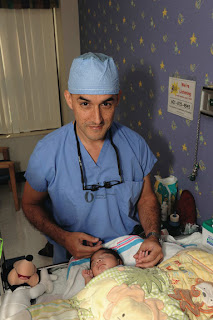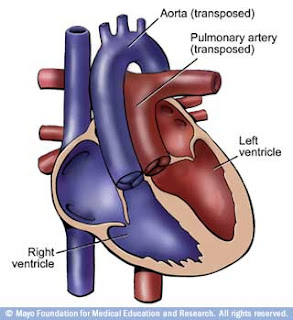The following is Kimberly Gamson's story. Here is the link to Kimberly's website, where you may purchase her butterfly jewelry (pictured) to support Turner's Syndrome awareness...
http://www.tsbutterflies.com/


Thank you Kimberly for bravely sharing your story in order to touch the lives of others- God Bless you!

I was born prematurely in California on Travis Air Force Base on February 9th, 1971 and have put a lot of living into my nearly forty years on this earth since being diagnosed at birth with Turner's Syndrome (as we all now know is defined as a chromosomal disorder diagnosed only in females who have only one X chromosome; marked by short stature, heart abnormalities and underdeveloped sex organs) which would affect my life for years to come. I had webbing of the neck (that I had several surgeries on up until I was twelve years old) which was an early indication that I had TS and I was also very sick and had to stay in the hospital for months before going home. Back then, Turner's Syndrome was not well known and as both my mother and father were very young.
When I was born, they had a lot of decisions to make and why was this? I will tell you.. First of all, as there was so much that was still unknown about this birth defect to many health care professionals at the time, they told my parents to basically give me up for adoption because they were so young and I was going to need alot of future care and that I would never have a normal life and would basically be a vegetable as it is so affectionately described as. So my mother, wonderful woman that she is, decided to defy what the doctor's had told her and keep me and raise me, as after all, I was her flesh and blood, her child, and she was not giving up on me! unfortunately, my father took the opposite route and that was that....
Growing up, although I was a happy child, I was also considered a loner by some and although I had friends, I normally preferred to spend time alone reading (I love the library and still do!) or listening to music. I truly believed that my love of books and reading helped me overcome my speech issues I had a a child. My mother tried to give me as normal a childhood as possible, but it was not always easy. I had many developmental problems such as a speech impedement as mentioned, and hearing loss (which today is much worse but I am getting by) and was not developing normally like a normal girl my age. My mom never gave up on me though, and she pushed me hard to learn and have confidence in myself and to this day, I am thankful to her for doing so.
I saw a TS specialist who ran all sorts of test on me and wanted to put me on growth hormones but my mother decided against them due to the side effects, and I was also on hormone replacement therapy (HRT) which I discontinued after a few years. Furthermore, although I went to regular public school during my elementary and middle school years, I still had to attend special programs that were available as I had difficulty with math, english, and reading, speech issues, etc.. Honestly, I think since TS had such a big impact on my life growing up that I had to make it not such a part of my life to feel normal, which was not easy. My two younger sisters that were born to my mom and her second husband both had normal lives and were born completely normal physically and here I was looking so different than them and we all know how we can be cruel as youngsters and we all had our share of teasing and cruel jokes so that was also an obstacle, but who does not face that as a child at some point? I was also jealous of my sister Heather growing up because she was always so popular and pretty and tall I always asked myself "why can't I be like her?" as I felt the same way about my mom and baby sister Patricia, so obviously I had a lot of issues with self-acceptance.
By the time I started my high school education, I was no longer taking special classes, which I felt was an acheivement and I graduated as normal, another acheivment! however as I was getting older and developing and maturing, of course the curiosity of boys did as well. Again arose the self-acceptance issue; "How am I going to explain my TS to a boy, and will he understand or reject me?"
It pretty much went all right over the years and then I met the one in 1997, my husband Steven. He was the one that I wanted to spend the rest of my life with, but once again came the TS issue, infertility. How would the man I love accept the fact that I could never give him a child naturally? (My sisters both had beautiful children, Heather a son named jake, who will be thirteen in August 2010, and Patricia a daughter Breanna, who just turned ten) well needless to say, I found out the answer when he proposed to me and we were married on the one of the most important and happiest days of my life, June 20th 1999. To this day we are working through the infertility issue as a couple and will probably pursue surrogacy in the near future, and when the time comes and my husband and I are blessed with children, I hope I am near as wonderful mother as my mother was to me. But until then, we are as happy as we were the day we got married, even happier in fact! and why... because he loves everything about me just as I am, flaws and all, and to me that is worth everything! Today, I lead a pretty normal and yet sometimes challenging, but overall happy life, enjoying marriage and family and planning for the future.
I am currently making another dream come true by attending college where I am currently in my third year working to obtain a Bachelor's Degree in Healthcare Administration with the University of Phoenix Axia Online College, which I will complete next year....yay! I also am finishing up a course with the U.S. Career Institute to obtain a certification to be a medical billing specialist. My husband and I are working on starting our own financial services business in the near future. Healthwise I am half deaf in both ears and get occasional ear infections, have hypertension, edema in both my hands and feet, a weak heart and heart murmur and still overcoming depression and insomnia which I have suffered from off on and for many years and currently on medication for which is helping, but believe you and me it definitely is not slowing me down!
Well that is my story in a nutshell. Thank you to my newly discovered and wonderful Facebook TS Sistas as we are all over the world for giving me the strength to do this as it was not very easy at all, as I am a very private person, but if my story helps just one other TS sista, then it will be worth it.. I love you all! To have you to understand what I have gone through and to relate to, as I never had that type of support much growing up, It is such a wonderful thing to be able to talk with other women who have TS and I also want to make it known that although I accept the fact that I have Turner's Syndrome, and want to do my part to spread awareness in my local area and as far as I can, there is more to me than this and it is just a small part of who I am and will always be. But remember as well that we are all miracles and God brought us on this earth to do great things and great things we shall do! We are all unique, special and beautiful both inside and out and never forget that! I am certianly looking forward to the next forty years....
BRING IT ON!!!!!! Kimberly A. Gamson





















